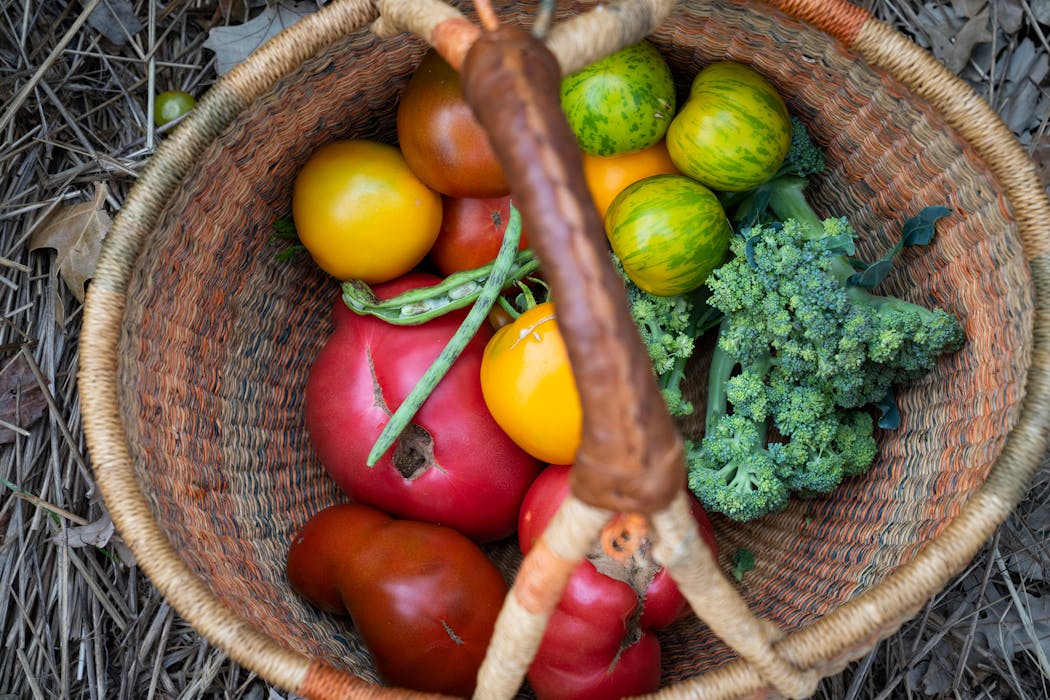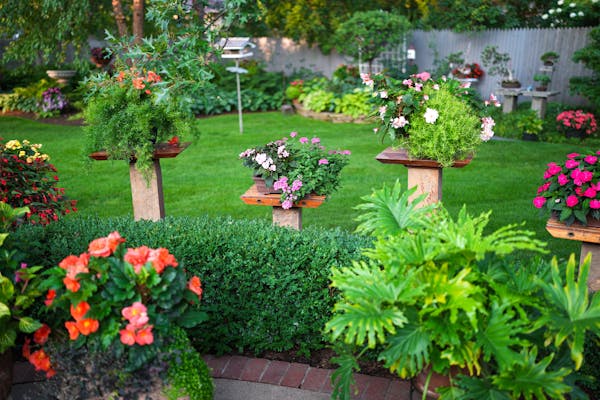Jean Clough started gardening decades ago to feed her family as a cash-strapped mother of three.
She lived on a dairy farm in Vermont and learned how to grow produce as well as keep chickens for eggs.
"I lived in a 400-square-foot house with two toddlers and a newborn one winter. We had no hot water and I had to lug in wood. I had to do a lot for us to get by," she said. "The gardening just evolved. ... It got bigger and bigger as I was growing food to raise my family."
Her love for gardening only grew from there. Today, her garden in Minneapolis' Cooper neighborhood, named a winner in the 2023 Star Tribune Beautiful Gardens contest, stretches more than several times the size of her 440-square-foot home. Clough makes use of every square inch during the growing season. The front yard is flooded with a variety of wildflowers. Meanwhile, fruits and vegetables grow in the backyard.
Clough, now 65, shares the abundant bounty with her adult son who lives just houses away as well as neighbors and co-workers at Turtle Bread on E. 34th Street, where she works as a manager.
"For me, it's become a way of life that I can't seem to stop," she said. "I'm one person and I grow all this food."
Love of community
Living in south Minneapolis, Clough was devastated by the killing of George Floyd at the hands of Minneapolis police. She took a leave of absence from work and found refuge in her garden.
And that's when it really took off. In the front, she created a meadow of mostly wildflowers that she dedicated to Floyd that now blossoms with white, purple and yellow flowers. It flourishes with life with bees buzzing, hummingbirds and butterflies zipping by and the occasional chipmunk or bunny scurrying across.
"I felt the need to create some beauty and this meadow was my tribute to his life," she said.
Hidden in the backyard, behind the tall wildflowers, is her vast garden. Some plants she grew purposely such as arugula as well as varieties of lettuce and tomatoes. Others, the seeds simply fell there — likely from birds — like the sunflowers and blackberry shrubs.
Big yields
Clough also switches some of what she grows every year — partly to experiment with new types of plants — and because sometimes she simply has too much of one thing.
In 2020 for example, she grew two long rows of potatoes resulting in more than 100 pounds. She had potatoes under her bed to cure and later stored them in laundry baskets in her basement along with her onions, sweet potatoes, squash and assorted jarred and canned goods (also filled with produce from her garden).
"I had to get creative," she said.
With such a tiny house, Clough has to be efficient about how she uses the space. She places a grate over the basement stairs to cure garlic and other herbs before placing them into storage.
"I share a lot of it with my co-workers at Turtle Bread, who then take it home or they make lovely meals for us with the produce I bring in," she said. "I let my neighbors know to come pick."
Anything that gets thrown out is composted right back into the garden.
How to grow well
So how does her garden grow so well? Every spring, she orders a pile of manure and hay to restore the soil and provide nutrients.
"The best thing for soil is just to add organic matter to it," she said. "Green manure crops is a good thing and I would recommend deep mulch gardening."
And she doesn't use any pesticides — opting for natural deterrents. For example, flea beetles decimated her arugula and mustard greens this year. But other items in her garden were saved thanks to the use of bug-repelling peppermint liquid castile soap diluted with water.
After that, it's about enjoying the bounty her garden brings each growing season. The best thing about growing your own food is how juicy and sweet it tastes, Clough continued as she picked blackberries and popped them into her mouth.
"I graze all summer long, eating things in the garden [as I pass]," she said. "You get used to having fresh food. ... When you eat processed foods it tastes really salty and it's not appealing."
'The Fall Guy' gives Hollywood a muted summer kickoff with a $28.5M opening




